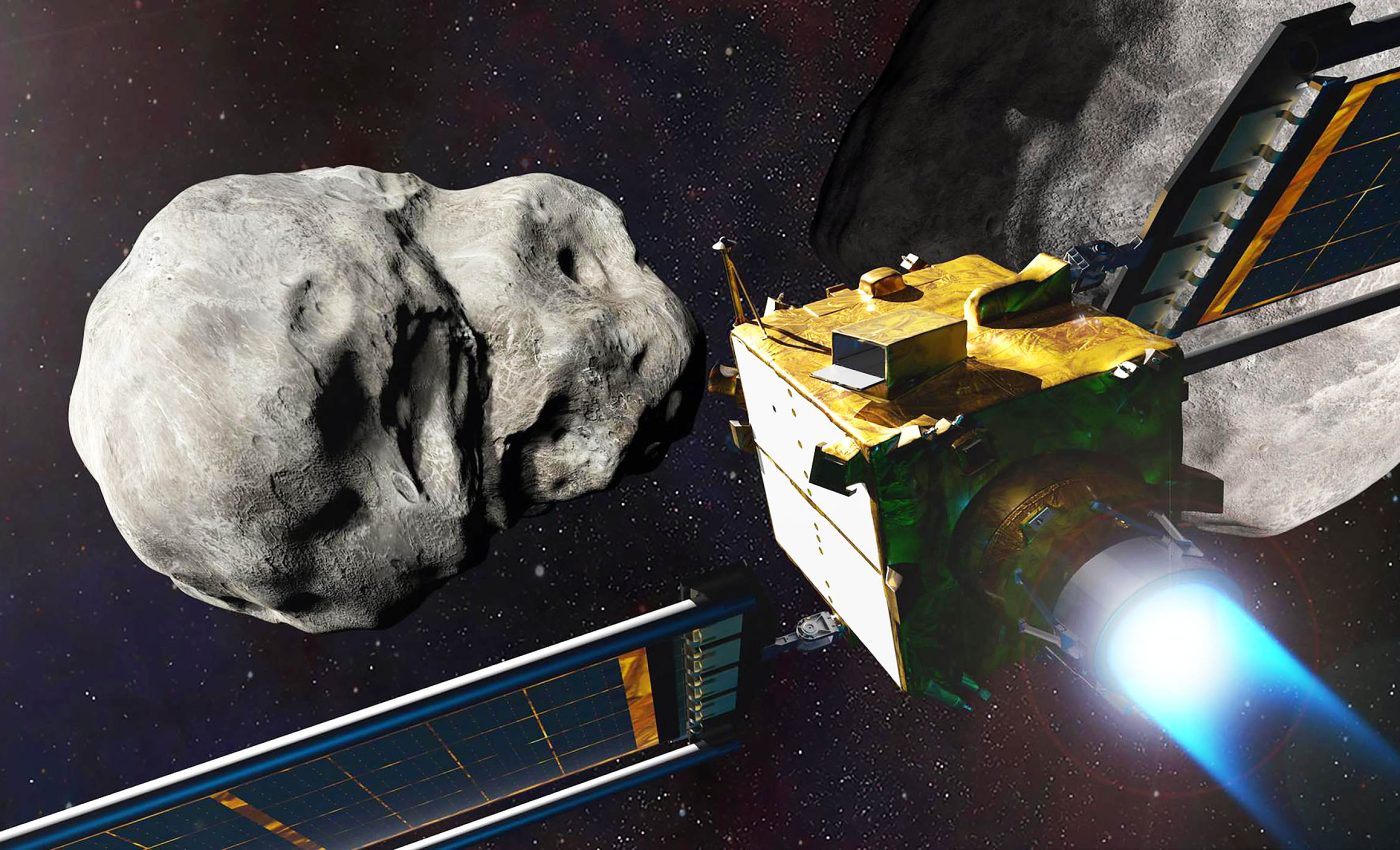
DART asteroid deflection mission had an unexpected outcome, now NASA knows why
In 2022, NASA sent the DART spacecraft to smash into a small asteroid moon called Dimorphos, aiming to prove that a collision could shift the orbit of an asteroid system.
The result stunned everyone. The orbit changed by more than thirty minutes almost instantly. That was a huge success for planetary defense.
But a smaller, stranger change appeared later. Observations showed that Dimorphos’s orbit kept shrinking by another half a minute in the following weeks.
That subtle drop confused scientists because the main impact should have been the end of the story. Something else seemed to be pulling on the system.
DART and Dimorphos
Researchers suggested a neat explanation: leftover debris. The impact launched huge amounts of rock into space. Not all of it escaped. Some of it lingered in the system, orbiting or drifting around.
If Dimorphos nudged that material outward, it could lose angular momentum in return. That trade would shrink the orbit further.
The idea had a catchy name: binary hardening. Models hinted that bound ejecta could behave like a drag force, gradually tightening the orbit.
The evidence lined up at first. The orbital decay looked exponential, just like debris clearing out over time. The match was tempting, but it needed to be tested in detail.
Dimorphos vs. Didymos scatterer
The test came down to one simple ratio: escape speed versus orbital speed. This ratio, called the Safronov number, decides if an object can scatter material away or just end up in a collision.
For Dimorphos, the number is tiny. Its escape speed is only a few centimeters per second, while its orbital velocity is nearly twice that.
That imbalance makes Dimorphos a weak scatterer. It cannot toss rocks far away like Jupiter does with comets. Instead, most debris drifts back and slams into Dimorphos or Didymos.
Collisions restore momentum to the system instead of draining it. Instead of tightening the orbit, the debris should have stretched it out.
Dimorphos orbital simulations
To see if theory matched reality, researchers built computer models of the system. They seeded clouds of particles around Dimorphos and watched the interactions unfold.
The results were consistent across every run. The orbital period increased, not decreased.
Low-speed particles fell back quickly and added momentum. High-speed particles fled before having much effect.
Only particles moving just under escape speed stayed long enough to interact, but even then the outcome favored orbital growth. Nothing in the simulations supported the idea of ongoing orbital tightening.
The verdict was clear. Binary hardening could not explain the thirty-second drop. Dimorphos simply lacks the gravitational grip to make it work.
Every realistic scenario pointed the same way: debris returns momentum, the orbit grows longer, not shorter.
That leaves a gap in the story. Observers measured a continued drop in the orbital period. Simulations show that the mechanism proposed to explain it cannot function. Something else must be at play.
Reshaping from the inside out
One likely suspect is Dimorphos itself. The impact left the moon spinning chaotically. Instead of rotating smoothly, it tumbled in a messy, unstable motion.
That kind of spin can drive landslides, surface collapses, or even deep internal shifts. If Dimorphos’s shape changed, the gravity between the two bodies would shift too.
A reshaping event could reduce the orbital period without relying on ejecta scattering. This explanation has some supporting clues. Light curves after the impact hinted at chaotic rotation.
Observers also noted changes in the system’s eccentricity weeks later, suggesting internal motion. Reshaping is messy and unpredictable, but it fits the data better than binary hardening.
Other effects on Dimorphos
There are smaller effects that could tweak the orbit, though none seem strong enough alone. Solar tides, radiation pressure, and the faint pull between debris particles could all add noise to the system.
Tests that included these influences barely changed the results. The big picture stayed the same: Dimorphos is too weak to scatter debris effectively.
Uncertainty also lingers in the observations themselves. The thirty-second drop was close to the margin of error.
Later measurements shrank the difference but did not erase it. Whether the drop was fully real or partly an artifact remains open.
What remains unsolved
The DART mission worked beyond expectations, but it also left scientists with a new puzzle. The primary orbital change was dramatic and clear.
The secondary change is subtle, uncertain, and unexplained. Binary hardening can’t account for it.
Reshaping, driven by chaotic rotation, now stands as the most convincing idea, though proof is still missing.
Dimorphos is a tiny world, yet its response to a single collision has forced researchers to rethink how small bodies behave.
If the orbit really dropped further, the cause lies not in scattered rocks but in the asteroid’s own restless structure.
The mystery is far from closed, and the Didymos system continues to keep astronomers watching closely.
The study is published in the journal arXiv.
—–
Like what you read? Subscribe to our newsletter for engaging articles, exclusive content, and the latest updates.
Check us out on EarthSnap, a free app brought to you by Eric Ralls and Earth.com.
—–













